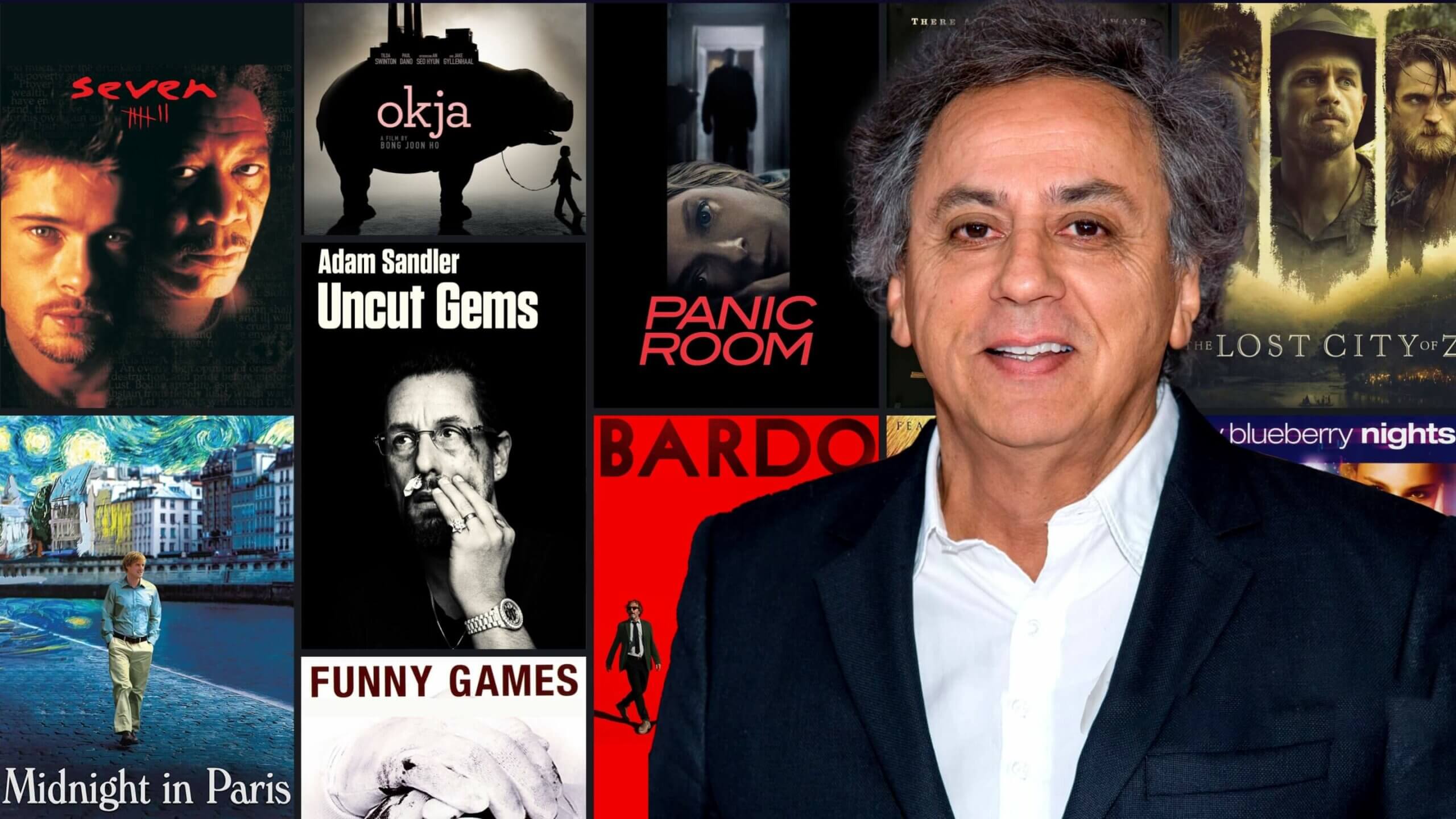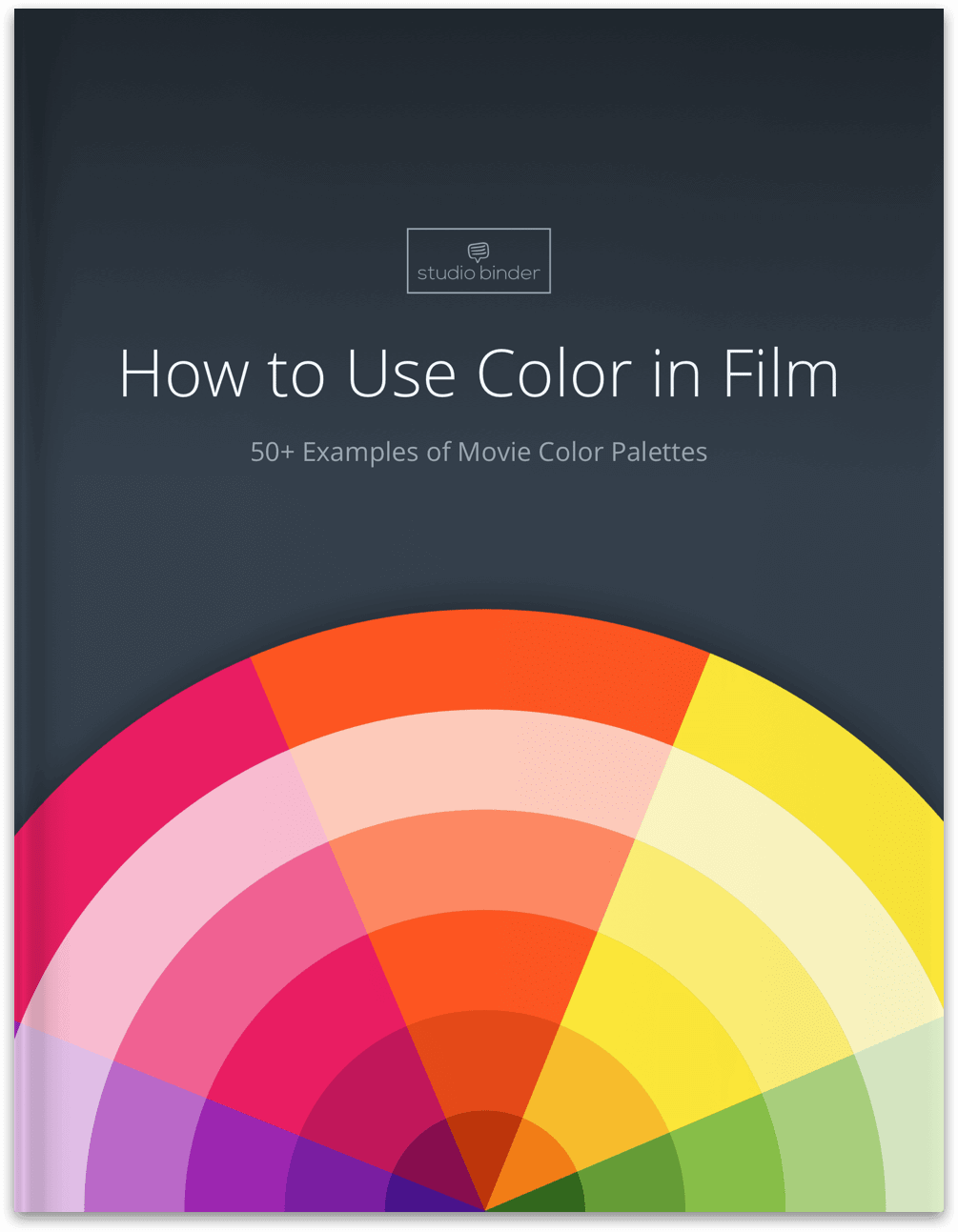Darius Khondji is everywhere. The esteemed cinematographer’s list of collaborators is as long as it is impressive; he’s worked with directors like Wong Kar-Wai, James Gray, David Fincher, the Safdie Brothers, Michael Haneke, Alejandro Iñárritu, and more. As you may be able to tell from such a list, Khondji is chameleonic, tailoring his aesthetic to whichever director he’s working with. Unlike other cinematographers, it can be difficult to discern when you’re watching a Khondji film. With that said, Khondji is not just a journeyman director of photography — he brings several cinematic qualities with him from film to film. In this article, we’ll look at what those qualities are, and why Khondji continues to return to them. But first, check out our video on the Iranian-French craftsmith.
Darius Khondji Movies
Who is Darius Khondji?
Darius Khondji is one of the best cinematographers working today. From a young age, he was fascinated with filmmaking, shooting shorts on a Super-8 as a kid. He moved from France to California to study at UCLA, and then majored in film at New York University and the International Center of Photography.
It was in film school that he noticed he was more interested in cinematography than directing.
He returned to France after his time in school and worked for a variety of cinematographers. He started to get jobs as a lighting director for commercial work, and making his own films on the side.
Eventually, he was picked to shoot Delicatessen, which received international praise and made Khondji a sought after DP.
From there, Khondji never turned back, working with some of the biggest names in the film industry, and even getting nominated for an Academy Award for his work on Alan Parker’s Evita.
Take a look at some of his most iconic shots throughout his career. Here's a collection we made of some of our favorite images using StudioBinder's storyboard creator. Click the image to explore the entire collection.
Darius Khondji Cinematography Collection • See the entire collection
DARIUS KHONDJI MOVIES
Exposing On The Edge
One through line in many Darius Khondji movies is his penchant for pushing his exposure to extremes. “I like to say that exposure is like a political statement,” he once said. “It’s a manifesto. I read a script for a feature and I imagine how I will expose it.”
This might mean overexposing, like in shots like this:

Khondji on set
But more frequently, it means embracing underexposure. In a Khondji film, underexposure can be beautiful.
The cinematographer has cited Gordon Willis’s work on Francis Ford Coppola’s The Godfather as a huge inspiration for him. On the masterpiece, Willis purposefully underexposed many key scenes, famously outraging studio executives, who claimed they couldn’t see anything.
David Fincher encouraged Khondji to embrace his love of underexposure on their first project together, Se7en. It was a fitting project to cloak in darkness, with its dark subject matter and dreary locations.
“What we did on Se7en was underexpose many of the interiors by two stops on a film negative that was quite contrasty. And underexposing by two stops really made the exteriors come alive, whether in the desert or the city, so that the brightness is always coming from the outside. In many of the interior scenes, there’s hardly any light except a few fluorescents, with reflections running to your eye through all the shiny surfaces.”
— Darius Khondji on Se7en
Let’s take a look at the following first minute of this clip to see how Khondji expertly used underexposure to his advantage in the film:
Darius Khondji cinematography
First, let’s reiterate that underexposure here perfectly fits the tone of the scene. Our two detectives are descending into the bowels of what looks like the world’s seediest club to investigate a horrific murder. Exposing this like a Wes Anderson film would be a big mistake.
But we can also focus on what’s properly exposed. The large quantity of practical lights are all within the camera’s dynamic range, meaning we can get rich golds from the lamps and reds and greens from the neon lights. If Khondji exposed for the two protagonists (as would be the typical approach), most of these lights would have been blown out.
It’s also important to note that the protagonists are not completely in the shadows. When it matters, we can clearly make out their faces with a strobe light or golden room ambience.
Underexposure also works with Khondji’s preference for shooting on film. The cinematographer has said that film is more forgiving for over- and underexposure.
And shooting on film also allows for Khondji to use flashing, a technique which pre-exposes shadows on film, making them slightly brighter and allowing for color to be inserted into them.
As Khondji has said, “Working with film feels more organic.”
FLASHING DEFINITION
What is Flashing?
Flashing is when film is exposed to a uniform light before it is exposed to a scene. This process can make darker areas retain more detail without affecting the exposure of highlights. When a gel is attached to the light flashing the film, the shadows in the scene that is subsequently shot will have that gel color’s tint.
You can see the effects of flashing in this night-time scene from Lost City of Z, which Khondji shot for director James Gray.
The scene is still relatively underexposed, but the shadows have a slight green color to them, made possible by the use of flashing.
Darius Khondji Movies
High Angle Lighting
Darius Khondji’s approach to lighting can take many forms. Just look at, say, The Immigrant and Uncut Gems — seems like there’s very little overlap.
But Khondji, like all good cinematographers, is very intentional about his lights’ directionality. He usually returns to one familiar direction. “I often use oblique light that goes from the top corner of a room to the bottom corner on the opposite side,” he said in one interview.
More generally, Khondji loves to light from above. It’s seen in nearly all of his movies, and to very different effects.
Take this still from Armageddon Time, for example.

Armageddon Time • Darius Khondji movies
Here, the key light on both characters is coming from a practical — the overhead lamp. It’s a pretty harsh light, but the shadows are softened by another practical: the soft blue coming in from the window.
The result is a shot with intimate and nostalgic lighting. It’s a quiet dinner scene with a wintery feel.
Now, take a look at this shot from Bong Joon-ho’s Okja.

Okja • Darius Khondji cinematography explained
This has a very different feel, with a blue, contrasty palette. But the key light is still from above. By omitting a fill light and giving the overhead light a cool color temperature, Khondji is able to adapt his lighting style into a scene with a completely disparate mood from the one in Armageddon Time.
When lighting, and constructing a shot generally, Khondji follows the French mantra “contre-emploi,” which means “against type.”
“In lighting there is also a way to play against type. For example we use a very hard source, like the Arrimax, and we aim it at big bounces outside the window, but then inside I don’t put any fill at all, so that the lighting inside is very contrasty, but made from a very soft source. The direction of the light through the windows makes the image contrasty, the size of the windows makes it contrasty, but the light inside is very soft, like a Lowell Soft Light.”
— Darius Khondji on lighting
This approach makes Khondji an incredibly versatile cinematographer, especially when it comes to lighting.
Darius Khondji Movies
Gold and Green
Perhaps the most immediately evident through line in Darius Khondji movies is his persistent use of green and gold. Khondji will use the two colors to contrast each other over and over again, similarly to how many other cinematographers use a complementary color scheme like blue and orange.
The use of gold will often be used to evoke a feeling of nostalgia. Take James Gray’s The Immigrant, for example, which is filled to the brim with gold.
Darius Khondji cinematography in The Immigrant
In this scene, nearly everything is golden — lights, skin tones, the wall. This golden hue is a perfect fit for the period-piece, giving New York a 1920s feel.
Khondji will often use green palettes to a different end, creating gritty textures devoid of warmth. You can see this use in this scene from The Beach.
Here, Richard is in a bare-bones hostel, and the green from the fluorescent light emphasizes that this place is far from the Ritz. Notice the color of light on both characters in the conversation: Daffy looks sickly in the pale green light, while the key light on Richard is — surprise, surprise — gold.
Darius Khondji cinematography
When Khondji combines green and gold, grittiness and nostalgic warmth collide. Take a look at this scene from City of Lost Children.
Darius Khondji cinematography
Here, we associate the gold with childhood memories of Santa, but the green subverts that warmth, creating a queasy feeling that highlights the dark surrealism of the scene.
To obtain this green, Khondji says he “would put 1/8 or 1/4 green gels with tracing paper on tungsten lights at 3200 or 3400 K, and I would add a little bit of blue which I would put at a very low level.”
Khondji’s use of green and gold, like his other recurring techniques, can be applied to any kind of film. Khondji proves that as a cinematographer you can prioritize a director’s vision without sacrificing your own.
For more on color theory in film, download our FREE E-Book below.
Cinematography techniques pdf
FREE Download
How to Use Color in Film
Hue, saturation, brightness — the three elements of color that make all the difference. In this book, we'll explain the aesthetic qualities and psychology effects of using color in your images. Topics include color schemes like analogous and triadic colors and how color palettes can tell stories of their own.
Up Next
Hoyte van Hoytema Cinematography
There are few cinematographers who can rival Darius Khondji’s stature in the film industry, and Hoyte van Hoytema is one of those cinematographers (not that we’re pitting the two against each other). Check out our rundown of the DP’s style.
Up Next: Hoytema Cinematography →
Showcase your vision with elegant shot lists and storyboards.
Create robust and customizable shot lists. Upload images to make storyboards and slideshows.


